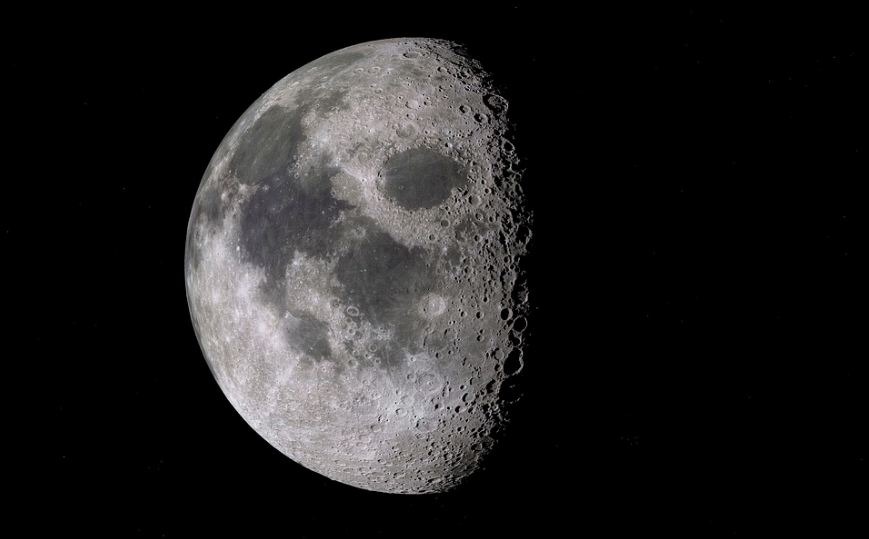Earth’s Moon is perhaps the most magnificent view up in the night sky. It’s one of the celestial bodies one can view with their naked eyes. The moon, though, looks even more spectacular when viewed up close using binoculars or a telescope.
To start with, you could look for a lunar map that you could use as a guide. With this, you can easily map out the moon’s different features and identify them.
If you look at a lunar map, you will locate at least a dozen lunar mares and mountains. Here is a list of the plains and mountains of the moon one can view through the telescope.
LUNAR MARES
Mare Serenitatis
Or also dubbed as “Sea of Serenity”, has a diameter of 674 km or 419 mi. It is located within the Serenitatis basin to the east of Mare Imbrium.
Mare Tranquillitatis
Also known as the Sea of Tranquillity or Sea of Tranquility sits within the Tranquillitatis basin. The Tranquillitatis has a slightly bluish tint than the rest of the Moon and stands out in colored photographs.
Mare Crisium
Or the “Sea of Crises” is located in the Crisium basin northeast of Mare Tranquillitatis and has a diameter of 556 km or 345 mi and 176,000 square kilometers (68,000 sq mi) in area.
Mare Fecunditatis
It is also called the “Sea of Fecundity” or “Sea of Fertility,” located in the eastern half of the visible Moon. Mare Fecunditatis has a diameter of 840 km, and its basin was formed in the Pre-Nectarian epoch.
Mare Nectaris
Or what they call the “Sea of Nectar”. It is a small volcanic lava plain located southwest of Mare Fecunditatis and south of Mare Tranquillitatis and is 84,000 square kilometers in size.
Mare Vaporum
Also known as the “sea of vapors,” it has a diameter of 242 kilometers or 150 mi and has a square area of 55,000 km2 or 21,000 sq mi and is located between the southwest rim and southeast rim of Mare Serenitatis and of the Mare Imbrium, respectively.
Mare Frigoris
Or the “Sea of Cold” is located north of Mare Imbrium within the outer rings of the Procellarum basin.
Mare Imbrium
It is also dubbed as the “Sea of Showers” or “Sea of Rains”. The mare is a vast lava plain and is one of the larger craters in the Solar System.
Oceanus Procellarum
Or what’s called the “Ocean of Storms” is a vast lunar mare right at the western edge of the near side of the Moon and the only one of the lunar mares to be called an “Oceanus” due to its size of more than 2,500 km or 1,600 mi across its north-south axis and covering roughly 10.5% of the moon’s total surface area.
Mare Humorum
Which is also known as the “Sea of Moisture”, is within an impact basin located 425 kilometers across and was suggested to have an age of about 3.9 billion years.
LUNAR MOUNTAINS
Mons Pico
It lies in solitary in the northern part of the Mare Imbrium Basin, and its selenographic coordinates are 45.7° N, 8.9° W. It has a length of 25 kilometers and a width of 15 km, with its peak rising to a height of only 2.4 km.
Montes Alpes
It is located in the northern part of the Moon’s near side and, if not obvious enough, was named after the Alps in Europe. Its selenographic coordinates are 52.81°N and 42.04°N in latitudes and 5.6°W and 3.22°E in longitudes. The lunar mountain’s peak reaches a height of 2250 m.
Montes Caucasus
It is located in the northeastern part of the Moon and is a rugged range of mountains with selenographic coordinates of 38.4° N, 10.0° E, and a diameter of 445 km, with its tallest peaks reaching heights of 6 km.
Mons Hadley
It is located in the northern portion of Montes Apenninus, just within the Moon’s northern hemisphere. It has a diameter of 25 km at the base and a height of 4.2 km (14,000 ft).
Montes Taurus
It is a mountainous region located east of Mare Serenitatis. The rugged and jumbled mountainous region has its center within the coordinates 27.32°N 40.34°E.
Montes Apenninus
It is located on the northern part of the Moon’s near side and was formed about 3.9 billion years ago. The mountain range is about 600 km or 370 mi long, and its peaks could rise as high as 5 km or 3.1 mi.
The craters and mountains of the moon can be easily viewed with a small telescope or even binoculars. When using a telescope, the general rule for magnification is: for each inch of an aperture of your objective lens, there should be 50 power. If you’re using binoculars, it should have an objective lens with a diameter of 50 mm. The best time to observe the moon is not when it is full. The best time would be just two or three days after the first quarter.


